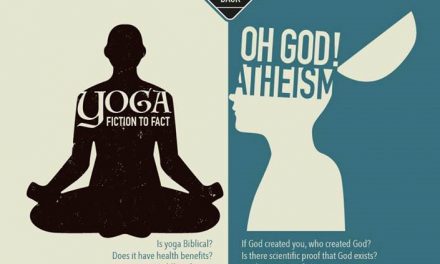 New fossil records have once again dismissed the evolution story. The Associated Press in Yahoo News reported the implications albeit with defense from evolution scientists. The Hindu, still under the megalomania that it is the only source of news, totally misreported it in its August 10th edition under the title ‘New picture of evolution’. Jerry Thomas follows the Associated Press news and critically interprets the news.
New fossil records have once again dismissed the evolution story. The Associated Press in Yahoo News reported the implications albeit with defense from evolution scientists. The Hindu, still under the megalomania that it is the only source of news, totally misreported it in its August 10th edition under the title ‘New picture of evolution’. Jerry Thomas follows the Associated Press news and critically interprets the news.
‘Their News’ is the verbatim reproduction of the Associated Press. Our Views is the critical interpretation.
Their News: Surprising research based on two African fossils suggests our family tree is more like a wayward bush with stubby branches, challenging what had been common thinking on how early humans evolved.
Our Views: There is nothing surprising in the research. We knew it before. What is surprising is that you still hold on to the evolution family tree. Anyway let us read further.
Their News: The discovery by Meave Leakey, a member of a famous family of paleontologists, shows that two species of early human ancestors lived at the same time in Kenya. That pokes holes in the chief theory of man's early evolution — that one of those species evolved from the other. And it further discredits that iconic illustration of human evolution that begins with a knuckle-dragging ape and ends with a briefcase-carrying man. The old theory is that the first and oldest species in our family tree, Homo habilis, evolved into Homo erectus, which then became human, Homo sapiens. But Leakey's find suggests those two earlier species lived side-by-side about 1.5 million years ago in parts of Kenya for at least half a million years. She and her research colleagues report the discovery in a paper published in Thursday's journal Nature.
Our Views: I told you so.
Their News: The paper is based on fossilized bones found in 2000. The complete skull of Homo erectus was found within walking distance of an upper jaw of Homo habilis, and both dated from the same general time period. That makes it unlikely that Homo erectus evolved from Homo habilis, researchers said. It's the equivalent of finding that your grandmother and great-grandmother were sisters rather than mother-daughter, said study co-author Fred Spoor, a professor of evolutionary anatomy at the University College in London. The two species lived near each other, but probably didn't interact, each having its own "ecological niche," Spoor said. Homo habilis was likely more vegetarian while Homo erectus ate some meat, he said. Like chimps and apes, "they'd just avoid each other, they don't feel comfortable in each other's company," he said.
Our Views: If the lived near each other but probably didn’t interact and If they don’t feel comfortable with each other, then they must be more like Mother-in-law and daughter-in-law than sisters. Please accept the conclusion that evolution is dead wrong than giving some misleading analogy. (FYI: This is a hearsay interpretation. My wife and my mother are like Naomi and Ruth).
Their News: There remains some still-undiscovered common ancestor that probably lived 2 million to 3 million years ago, a time that has not left much fossil record, Spoor said.
Our Views: If it is still-undiscovered, then how did you know it? This is too much!!!
Their News: Overall what it paints for human evolution is a "chaotic kind of looking evolutionary tree rather than this heroic march that you see with the cartoons of an early ancestor evolving into some intermediate and eventually unto us," Spoor said in a phone interview from a field office of the Koobi Fora Research Project in northern Kenya.
Our Views: Yes, I understood what you meant by “chaotic kind of evolutionary tree”. Earlier when you presented a coherent picture of evolution, we asked for evidences. Now that it is chaotic we can never ask for fossil evidences. How can chaotic kind have evidences?
Their News: Th
at old evolutionary cartoon, while popular with the general public, is just too simple and keeps getting revised, said Bill Kimbel, who praised the latest findings. He is science director of the Institute of Human Origins at Arizona State University and wasn't part of the Leakey team. "The more we know, the more complex the story gets," he said. Scientists used to think Homo sapiens evolved from Neanderthals, he said. But now we know that both species lived during the same time period and that we did not come from Neanderthals. Now a similar discovery applies further back in time.
Our Views: “The more we know the more complex the story gets”. Amen. It means that you don’t know how to scientifically explain the evolution with the available evidences. Evolution has become a credulous story and not a complex story.
Their News: Susan Anton, a New York University anthropologist and co-author of the Leakey work, said she expects anti-evolution proponents to seize on the new research, but said it would be a mistake to try to use the new work to show flaws in evolution theory. "This is not questioning the idea at all of evolution; it is refining some of the specific points," Anton said. "This is a great example of what science does and religion doesn't do. It's a continuous self-testing process."
Our Views: Yes this is a great example of what evolutionist scientists do. When Christians find that the evidences do not support their theory, they reject their theory. When evolutionist scientists find that the evidences do not support their theory, they try to ‘refine’ their theory and will still hold to it.
{moscomment}





Homo habilis and Homo erectus; who named them so, did they call themselves so? or was it the evolutionary christening?
Who interviewed Homo Habilis and Homo Erectus to know their eating habits?
Hey, you know Homo Habilis had a dietitian, they told me, Homo Erectus ate Homo Habalis. It’s a dog eat dog life, buddy. Therefore, Homo Habilis where dogs eaten by Homo Erectus who also where dogs.
Nick lived 20 million years back and had a hunch back. Ami was a hunch back who was Nicks neighbour. 20 million years later a scientist dug up their bones, dated them and proclaimed the discovery of a new species, very similar in morphology to humans and concluded humans are evolved from hunchbacks.
Very amusing but i guess those evolution guys won’t see the humour :grin
I believe we’re the product of ET experiments. The earlier “species” were lab discards.
So you believe that Ancient tales of Jewish people (the bible) says the world is 7000 years old so. You believe that? :zzz